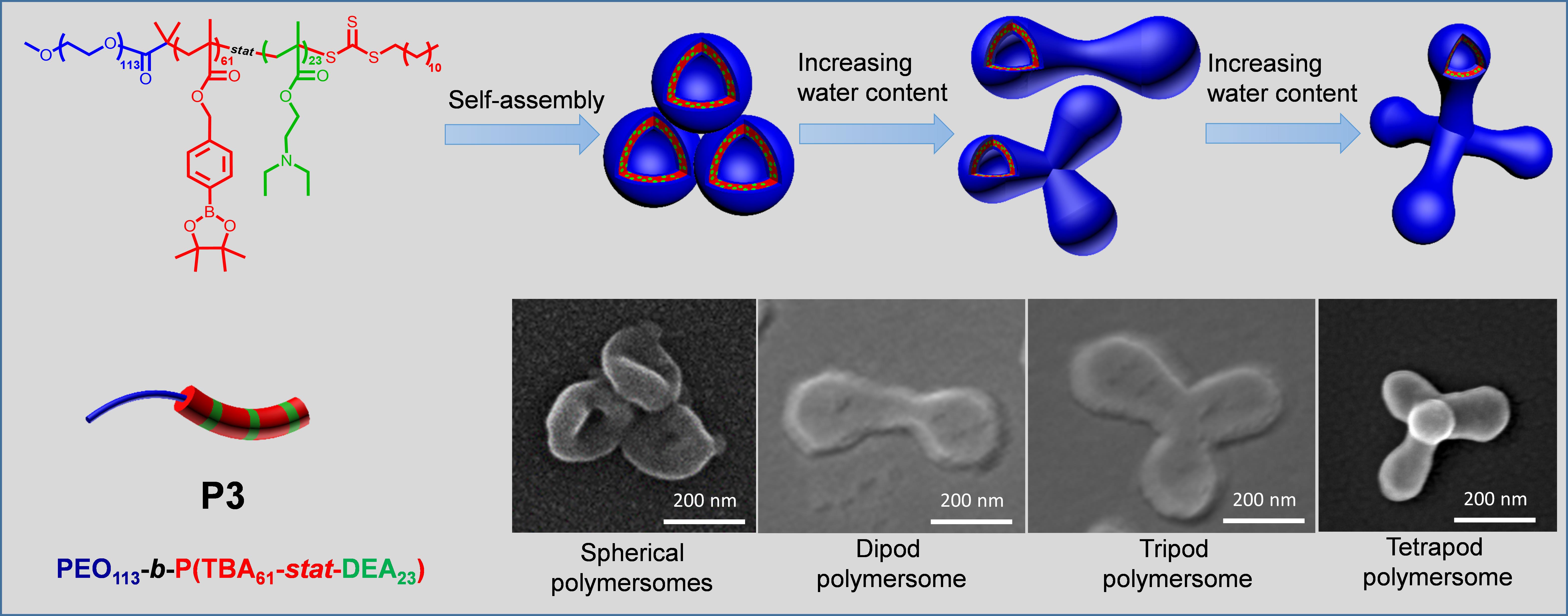Tetrapod Polymersomes
作者:Xiao, J. G.; Du, J. Z.* 时间:2020-03-12 点击数:

Abstract:
Hollow nanoparticles such as polymersomes have promising potentials in many fields. However, the design and construction of higher-order polymersomes with precisely controlled spatial compartments is still very challenging. Herein, we report a unique tetrapod polymersome that is evolved via precisely controlled fusion of four traditional spherical polymersomes that are selfassembled from poly(ethylene oxide)113-block-poly[4-(4,4,5,5-tetramethyl-1,3,2-dioxaborolan-2-yl)benzyl methacrylate61-statistic-2- (diethylamino)ethyl methacrylate23] [PEO113-b-P(TBA61-stat-DEA23)] in DMF/water at lower water content (Cw). To unravel the secret behind the tetrapod polymersomes, a series of block copolymers with various comonomer types and degrees of polymerization were synthesized. PEO113-b-PTBA80 self-assembles into spherical micelles in DMF/water, and the subsequent evolution into tripod and multipod micelles, and finally micelle clusters upon increasing Cw suggests that the TBA is a ‘pro-fusion’ component that facilitates the fusion due to its providential hydrophobicity and chain mobility. When one fourth of TBA of PEO113-b-PTBA80 is substituted by DEA, spherical polymersomes of PEO113-b-P(TBA61-stat-DEA23) are born in DMF/water, and then fused into dipod, tripod (Cw = 95%), and finally tetrapod polymersomes (Cw = 100%) upon increasing Cw, suggesting that the DEA is not only a promotor of hollow pods, but also an ‘anti-fusion’ component that can compromise with ‘pro-fusion’ force for its high chain mobility. Either tetrapod polymersome or micelle cluster is a matter of balance between ‘pro-fusion’ and ‘anti-fusion’ forces. Overall, we provide a fresh insight for creating tetrapod polymersomes as well as other higher-order structures with precisely defined spatial compartments.
文章链接:Journal of the American Chemical Society 2020, 142, 6569-6577.